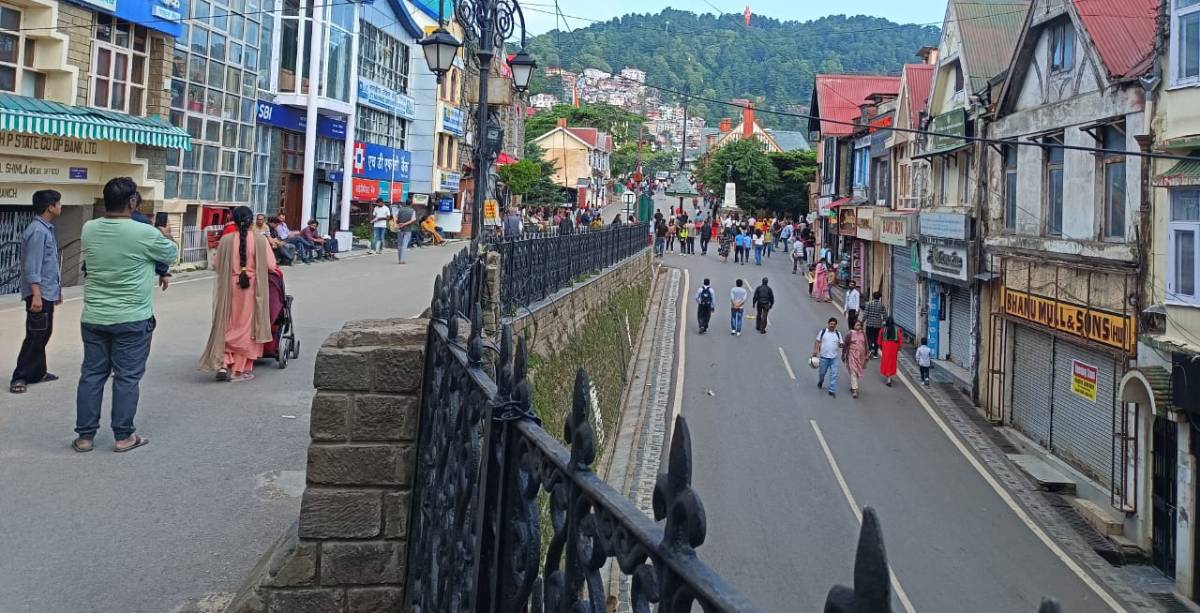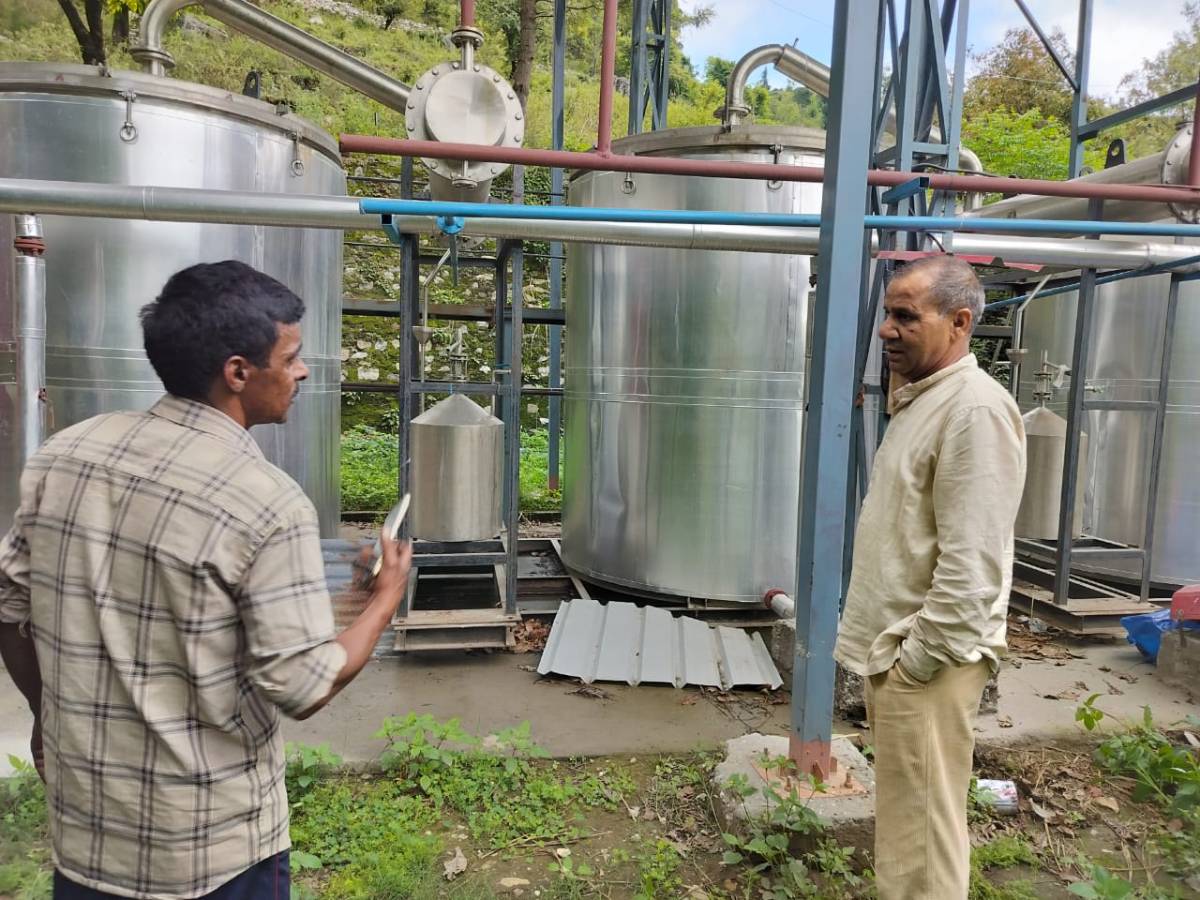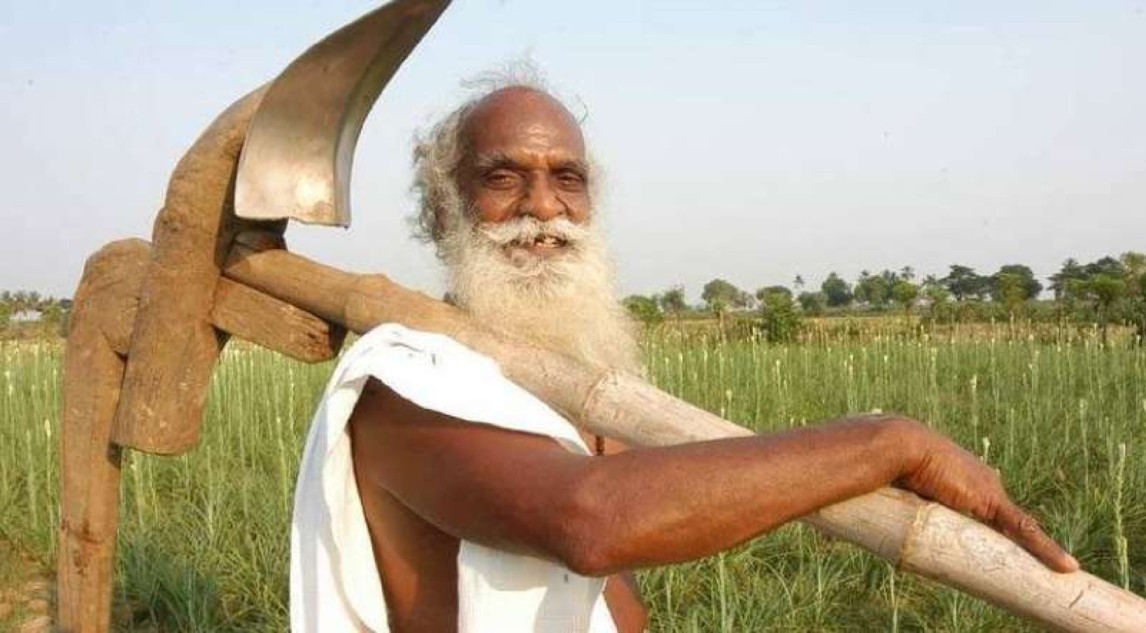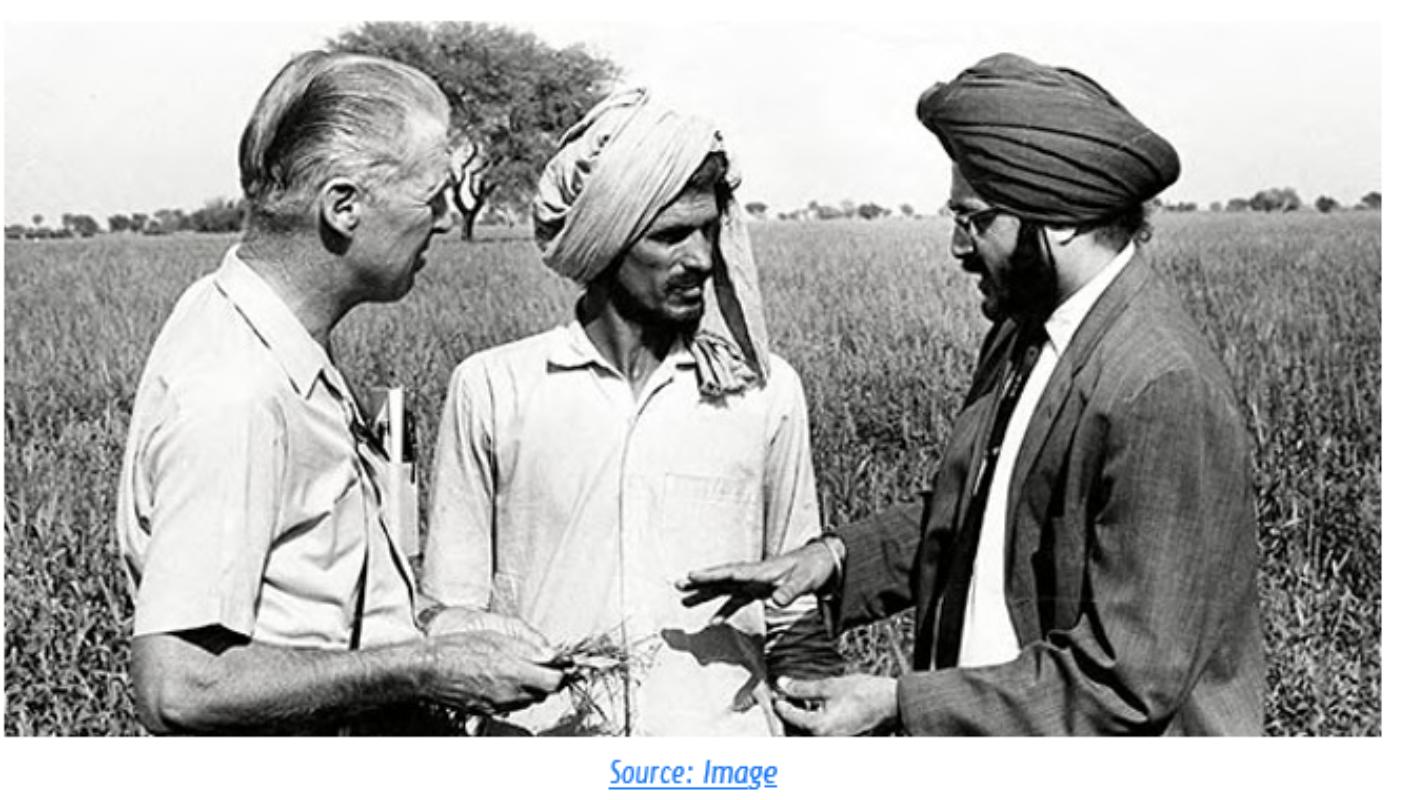As economies grow and evolve to capture new aspects of this evolution it’s only natural to revisit any laws and regulations enacted in the past. As the fourth industrial revolution approaches the economies world –over are undergoing a fundamental shift, as work spaces evolve, new legislations are required to cater to this change. Moreover, situation like the COVID-19 pandemic and the resultant lockdown has brought to the fore the issues of insecurity and non-negotiable layoffs, low bargaining power of the Indian worker.This lack of safety nets for the large extent of the workforce in 21st century requires re-evaluation of the prevalent institutional order and the legislations it works on. Thus a demand for labour reforms is a necessity. But does this reformation can be inclusive to the large unorganized work force in India, what do they stand to lose, what shall be the safeguards to guard their interest, are some of the themes explored.
As economies grow and evolve to capture new aspects of this evolution it’s only natural to revisit any laws and regulations enacted in the past. As the fourth industrial revolution approaches the economies world –over are undergoing a fundamental shift, as work spaces evolve, new legislations are required to cater to this change. Moreover, situation like the COVID-19 pandemic and the resultant lockdown has brought to the fore the issues of insecurity and non-negotiable layoffs, low bargaining power of the Indian worker.This lack of safety nets for the large extent of the workforce in 21st century requires re-evaluation of the prevalent institutional order and the legislations it works on. Thus a demand for labour reforms is a necessity. But does this reformation can be inclusive to the large unorganized work force in India, what do they stand to lose, what shall be the safeguards to guard their interest, are some of the themes explored.
The Indian economy is characterised by the existence of a vast majority of informal or unorganised labour employment. Overall Estimates of Employment.The labour force includes those working (called the workforce) plus those able and willing to work, but are unemployed. In India, the National Sample Survey Organization (NSSO) conducted five-yearly Employment and Unemployment Surveys (EUS) and the last EUS was in 2011-12. The Government of India (GoI) discontinued the EUS from 2015 onwards and launched the Periodic Labour Force Survey (PLFS) from 2017. The first Annual Report of the PLFS for the period June 2017- June 2018 was released in June 2019. The second report based on the survey from July 2018 to June 2019, was released in June 2020. Though the second annual report of the PLFS came in the middle of the pandemic-induced lockdown, as it covered a period a year before, it could not throw light on the situation in the midst of the lockdown.
Using other sources, particularly the unemployment reports from the Centre for the Monitoring of the Indian Economy (CMIE), we were able to put together a picture as on 31st December 2020. Applying the Labour Force Participation Rate (LFPR) of 37.5 per cent for age 15 and above, from the PLFS 2018-19, to the estimated Indian population of age 15 years and above of 1095 million1 at the end of 2020, we computed that the labour force was 520 million at the beginning of 2021. Of these, as per CMIE’s moving average, 9.15 percent or 47.6 million persons were unemployed at the end of 2020. In colloquial terms, at beginning of 2021, India had a labour force of 52 crore, of whom 47.2 crore worked and 4.76 crore were unemployed.
Labour laws are a set of laws that deal with the rights and restrictions of the employers and the employees in an economy. They are greatly impacted by the social and economic changes in an economy. They broadly fulfill three roles: Chalk out the rights and powers of the employees, unionization of employees, remedial mechanism when rights are infringed.
The major challenge for labour policy is to facilitate employment growth while protecting workers’ rights. Economists have long argued that India’s outdated labour laws need change. Stringent hiring-firing rules applied to firms with over 100 employees, making it virtually impossible to lay off workers. This adversely acted as an incentive for smaller firms to stay small so they could escape the rules. According to the World Bank, with less restrictive laws, India could approximately add on an annual basis “2.8 million more good quality formal sector jobs”.
Key debates relate to the coverage of small firms, deciding thresholds for prior permission for retrenchment, strengthening labour enforcement, allowing flexible forms of labour, and promoting collective bargaining. Further, with the passage of time, labour laws need an overhaul to ensure simplification and updation, along with provisions which can capture the needs of emerging forms of labour (e.g. gig work). This note discusses these challenges and the approaches taken by the four Codes.
Employment by Location, Gender and Age
In terms of rural/urban and male/female shares of the labour force, as per the PLFS 2018-19, about 55.1 per cent of rural males, 19.7 per cent of rural females, and 56.7 per cent of urban males and 16.1 per cent of urban females were in the labour force. As can be seen, female labour force participation rate (LFPR) was much lower than male LFPR. Female LFPR is high in low-income countries as well as in upper-middle and high-income economies, but relatively low in lower-middle-income countries, creating a U-shaped relationship between national income and female LFPR (Goldin 1995; Mammen and Paxson 2000). Decline in female LFPR in India since the 2005 is in line with this U-shaped curve (Mehrotra and Sinha, 2017; Regy 2019).2
The age wise detail for LFPR is available from the PLFS 2017-18. In that year, among persons of age 15 years and above, LFPR was 49.8 per cent. Working age (15-59 years) population LFPR was 49.8 per cent. However, among persons of age 15-29 years, LFPR was only 38.2 per cent, much lower than working age population, which indicated that a majority of working age youth were “Not in Education, Employment or Training” (NEET), yet were not seeking work.
Sectorwise employment details are also from PLFS 2017-18. From that data, it can be seen that crop cultivation accounted for 37.14 per cent of the work force, and animal husbandry (6.55), making farming the largest occupation of 43.69 per cent. Manufacturing (12.13), Construction (11.68), Wholesale and Retail Trade (10.09), Transport and Storage (4.93) and Education services (3.78) were the next five largest employment sectors, together higher than farming.
The Informal Sector – Employment of the Last Resort
As per the Annual Report of the Periodic Labour Force Survey (PLFS) 2017-18, in India, 68.4 per cent of the workers in the non-agriculture sectors were engaged in the informal sector.
By gender, the share of informal sector among male workers was 71.1 per cent and among female workers was nearly 54.8 per cent in non-agriculture sectors.This was due to the fact females, when they worked, tended to get into arrangements where they were more likely to be causal workers.
By contractual status, in rural areas, the share of households who had major source of income from self-employment was 52.2 per cent. Households with major source of income from regular wage/salary earning were 12.7 per cent and households in casual labour during 2017-18 were 25 per cent.
In urban areas, the share of the households in self-employment was 32.4 per cent; the share of households with regular wage/salary earning was 41.4 per cent while those in casual labour was 11.8 per cent. As can be seen, urban areas were magnets because they offered a much greater opportunity for regular wage/salary earning.
Self-Employed Workers
The largest number of these were self-employed. During 2017-18, about 52.2 per cent of rural households had major source of income from self-employment. In terms of earnings, as many as 57 per cent of all workers in rural areas fall were self-employed and their average gross earnings ranged between Rs 8500 to Rs 9700 per month among males and Rs 3900 to Rs. 4300 among females during 2017- 18. In urban areas, where 38 per cent of all workers were self-employed, the average gross earning was around Rs 16,000 among males and it ranged between Rs 6500 to Rs 7500 among females during 2017-18.The differential of nearly 76 per cent between rural and urban males’ earnings through self-employment, in addition to more self-employment opportunities in urban areas, explains the urban pull for rural migrants.
Regular Workers in the Informal Sector
The share of rural households with major source of income from regular wage/salary earning was 12.7 per cent. Earnings in rural areas ranged from Rs 13,000 to 14,000 per month among males and between Rs 8,500 to 10,000 per month among female. In urban areas, the share of households with regular wage/salary earning was 41.4 per cent. Earnings among regular wage/salaried employees ranged from Rs 17,000 to 18,000 among males and from Rs 14,000 to 15,000 among females in 2017-18. The differential of nearly 30 per cent between rural and urban wages, in addition to more job opportunities in urban areas, explains the urban pull.
Casual Workers
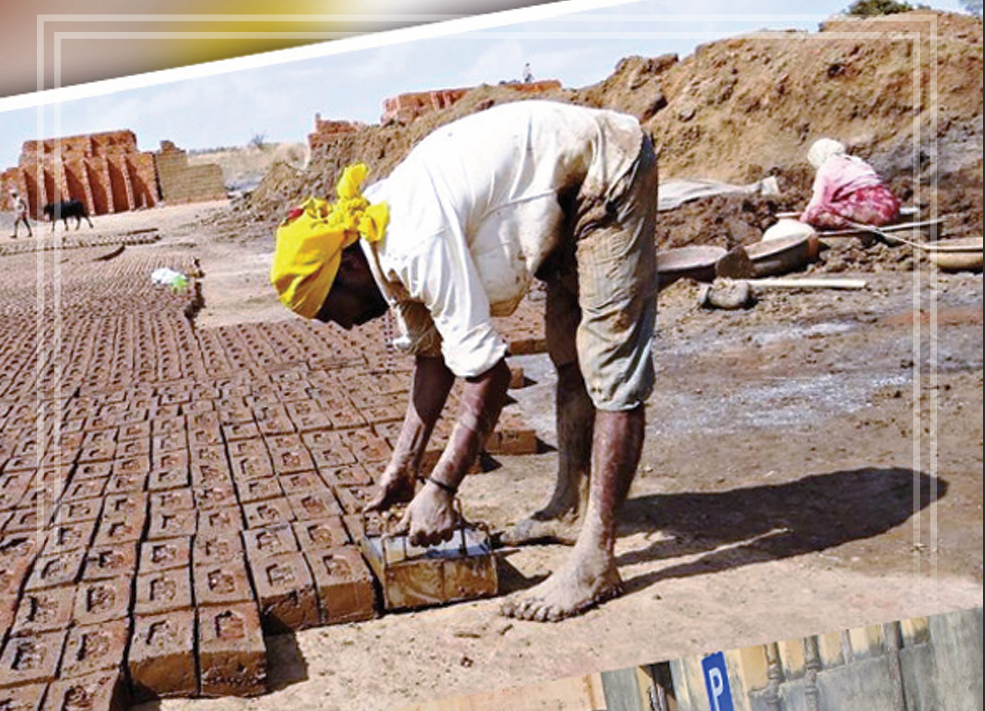
Households in casual labour during 2017-18 were 11.8 percent in rural areas and 25 per cent in urban areas. In terms of earnings per day, casual labour engaged in works other than public works like MNREGS earned from Rs 253 to Rs 282 among males (working out to Rs 6955 per month) and from Rs 166 to Rs 179 among females (Rs 4511 per month). Urban average earnings per day by casual labour ranged from Rs 314 to Rs 335 among males (Rs 8435 pm) and from Rs 186 to Rs 201 among females (Rs 503 pm).The 94 per cent differential in rural and 104 per cent in urban areas, between wages of regular employees and casual workers, in addition to greater insecurity of tenure and lack of benefits, explains the urge to search for “naukri” (regular job) rather than “rozgar” (casual work). Job seekers often opt for Swarozgar (self-employment) as a temporary option initially, but it becomes lifelong for most of them.
Benefits and Working Conditions
Let us briefly look at worker benefits and working conditions in the informal sector. Even among regular wage/ salaried employees, 49.6 per cent did not any social security benefit.Thus, there was no paid leave once a year, not maternity leave or benefits, no crèches, no cover for health and life under the Employees State Insurance, nor any provident fund/pension. Working conditions showed little concern for occupational health and safety, and amenities like first aid were missing. As many as 95 percent of women workers in the informal sector in India suffered abuse and sexual harassment at the work place, as per a study by Human Rights Watch.3
India not only had a large percentage of its workers in the informal sector due to the inadequacy of employment in the formal sector but the unemployment rate4 was 6 per cent in 2011-12. In the same year, the share of the population below the poverty line was around 22 per cent5 .Thus, many of the working persons were not earning enough to cross the poverty line. For them, some guaranteed employment was needed, even if it provided just living wages.
Categorisation of Labour
The Ministry of Labour, Government of India, has categorized the unorganized labour force under four groups in terms of Occupation, nature of employment, especially distressed categories and service categories.
As per the Economic Survey 2007-08, 93 per cent of India’s workforce included the self- employed and employed in unorganized sector.
Under Terms of Occupation
Small and marginal farmers, landless agricultural labourers, share croppers, fishermen, those engaged in animal husbandry, beedi rolling, labelling and packing, building and construction workers, leather workers, weavers, artisans, salt workers, workers in brick kilns and stone quarries, workers in saw mills, oil mills, etc. come under this category.
Under Terms of Nature of Employment
Attached agricultural labourers, bonded labourers, migrant workers, contract and casual labourers come under this category.
Under Terms of Specially Distressed Category
Toddy tappers, scavengers, carriers of head loads, drivers of animal driven vehicles, loaders and unloaders come under this category.
Under Terms of Service Category
Midwives, Domestic workers, Fishermen and women, Barbers, Vegetable and fruit vendors, Newspaper vendors etc. belong to this category.
In addition to these four categories, there exists a large section of unorganized labour force such as cobblers, Hamals, Handicraft artisans, Handloom weavers, Lady Tailors, Physically handicapped self-employed persons, Rickshaw pullers, Auto drivers, Sericulture workers, Carpenters,Tannery workers, Power loom workers and Urban poor.
Though the availability of statistical information on intensity and accuracy vary significantly, the extent of unorganized workers is significantly high among agricultural workers, building and other construction workers and among home based workers.According to the Economic Survey 2007-08 agricultural workers constitute the largest segment of workers in the unorganized sector (i.e. 52 per cent of the total workers).
To a greater extent, these transformation could be related to the ongoing globalization process and the resultant efforts on the part of employers to minimize the cost of production to the lowest levels. It is also evident that most of these outcomes are highly correlated and mutually reinforcing. A closer analysis suggests that the growing informalisation of labour market has been central to most of these transformations, which inter alia highlights the utility of understanding the growth of unorganized sector in India and its implications.
Many thought that India’s growth could do no wrong, and took the administrative versions and interpretations for granted. Now it comes to a point that none of these can be taken for granted. Growth is slow, inflation is structural and structure of employment is not enough to cater to the growing labour force.
Persisting Prominence of Unorganized Workers in India
Predominance of unorganized or informal employment has been one of the central features of the labour market scenario in India.While the sector contributes around half of the GDP of the county, its dominance in the employment front is such that more than 90 per cent of the total workforce has been engaged in the informal economy. As per the latest estimation of a Sub-committee of the National Commission for Enterprises in the Unorganized Sector (NCEUS), the contribution of unorganized sector to GDP is about 50 per cent (NCEUS 2008).
This national level pattern of informal workers occupying around 90 per cent of the workforce is more or less similar in the case of most of the prominent states in the country.Among the unorganized sector workers, a considerable proportion (about 65 per cent) is engaged in agricultural sector, which in turn indicates the prominence of rural segment in the informal economy.
The growth of formal employment in the country has always been less than that of total employment, indicating a faster growth of employment in the informal sector. Available data suggests that within the formal sector also the proportion of informal / unorganized workers are on the increase. For instance, by providing a comparison of the NSSO Employment Data for 55th and 61st Rounds (for 1999-2000 and 2004-05 respectively) the NCEUS (2007) explains that the country is currently in a state of “informalisation of the formal sector”, where the entire increase in the employment in the organized sector over this period has been informal in nature.
It is widely acknowledged that the informal sector in India suffers from a low productivity syndrome, compared to the formal sector. The prominent features of the sector are lower real wages and poor working / living conditions. Further, the sector is characterized by excessive seasonality of employment (especially in the farm sector), preponderance of casual and contractual employment, atypical production organizations and work relations, absence of social security measures and welfare legislations, negation of social standards and worker rights, denial of minimum wages and so on. Poor human capital base (in terms of education, skill and training) as well as lower mobilization status of the work force further add to the vulnerability and weaken the bargaining strength of workers in the informal sector.Thus, the sector has become a competitive and low cost device to absorb labour, which cannot be absorbed elsewhere, whereas any attempt to regulate and bring it into more effective legal and institutional framework is perceived to be impairing the labour absorbing capacity of the sector.
With the advent of globalization and resultant reorganization of production chains led to a situation where production systems are becoming increasingly atypical and non-standard, involving flexible workforce, engaged in temporary and part-time employment, which is seen largely as a measure adopted by the employers to reduce labour cost in the face of stiff competition. No doubt, it obviously indicates that these flexible workers in the new informal economy are highly vulnerable in terms of job security and social protection, as they are not deriving any of the social protection measures stipulated in the existing labour legislations. The insecurities and vulnerabilities of these modern informal sector labour are on the rise, as there is a visible absence of worker mobilization and organized collective bargaining in these segments owing to a multitude of reasons.
The alarming expansion of informal sector, in recent times, has adversely affected employment and income security for the larger majority of the workforce, along with a marked reduction in the scale of social welfare / security programme. In our “global” cities such as Bangalore, which are being show-cased as the new faces of an affluent and vibrant India, there are lakhs of people who rely on manual labour for their own livelihood. The housemaids, security guards, construction workers, garment workers, cobblers, beedi workers, agarbati workers, drivers and many others have a very different story to tell.Their incomes have not grown at the staggering rate of their employers; indeed adjusted for inflation their incomes have often fallen over the last two and half decades, driving them into deeper poverty.
Major Characteristics of the Unorganised Sector Workers
The unorganized labour is overwhelming in terms of its number range and therefore they are omnipresent throughout India.
As the unorganized sector suffers from cycles of excessive seasonality of employment, majority of the unorganized workers does not have stable durable avenues of employment. Even those who appear to be visibly employed are not gainfully and substantially employed, indicating the existence of disguised unemployment. The workplace is scattered and fragmented. There is no formal employer – employee relationship
In rural areas, the unorganized labour force is highly stratified on caste and community considerations. In urban areas while such considerations are much less, it cannot be said that it is altogether absent as the bulk of the unorganized workers in urban areas are basically migrant workers from rural areas.
Workers in the unorganized sector are usually subject to indebtedness and bondage as their meager income cannot meet with their livelihood needs.The unorganized workers are subject to exploitation significantly by the rest of the society.They receive poor working conditions especially wages much below that in the formal sector, even for closely comparable jobs, i.e., where labour productivity are no different.The work status is of inferior quality of work and inferior terms of employment, both remuneration and employment.
Primitive production technologies and feudal production relations are rampant in the unorganized sector, and they do not permit or encourage the workmen to imbibe and assimilate higher technologies and better production relations. Large scale ignorance and illiteracy and limited exposure to the outside world are also responsible for such poor absorption.
The unorganized workers do not receive sufficient attention from the trade unions. Inadequate and ineffective labour laws and standards relating to the unorganized sector. Though it has been argued that most labour laws are directly and indirectly applicable to the workers in the unorganized sector also, their contribution is very negligible to the unorganized workers. In spite of the fact that not much has been done in providing social security cover to the rural poor and the unorganized labour force, the country has made some beginning in that direction. Both the central and state governments have formulated certain specific schemes to support unorganized workers which fail in meeting with the real needs and requirements of the unorganized sector labour force.
This becomes clear even when the highly proclaimed National Rural Employment Guarantee Act -2005 (NREGA), though it is a breakthrough, doesn’t have common wage in different states and limits itself only to hundred day’s work for those registered worker under the Act. What about the rest of the days in a year? As per this Act, the work guarantee applies in rural areas only, what about the urban poor? Looking at the recent Unorganized Sectors’ Social Security Act (2008), one really wonders if there is any provision for an unorganized worker in this Act other than some guidelines about the available social security schemes in the country. How can it be called an Act unless it has the legal binding and provisions of rights to work and entitlements under it?
Here as per the Act nothing is mentioned about what constitutes appropriate and adequate social security for the vast mass of unorganized workers and their dependents, what eligibility criteria, if any, ought to be prescribed, what will be the scale of benefits that the workers and their families are entitled to receive and under what conditions, what will be the funding arrangements that must be put in positions to meet the cost of social security and so on. Aren’t the unorganized workers of this country entitled to receive, minimum standards of social security and labour rights, on the scale and spread adumbrated in the relevant ILO convention drawn up more in the 1950s?
Footnotes:
1 https://www.worldometers.info/world-population/india-population/
2 Mahajan, et al 2020.
3 https://economictimes.indiatimes.com/magazines/panache/2-years-after-metoo-movement-poor-indian-women-fear-losing-their-jobs-over-workplace-harassment- complaintsormetoo-2-years-on-indian-women-in-informal-sector-rarely-report-workplace-harassment-over-fear-of-losing-job/articleshow/78680850.cms?from=mdr
4 NSSO(2013) http://mospi.nic.in/sites/default/files/publication_reports/KI-68th-E per cent26U-PDF.pdf
5 “Number and Percentage of Population Below Poverty Line”. Reserve Bank of India. 2012 https://web.archive.org/web/20140407102043/http://www.rbi.org.in/scripts/PublicationsView.aspx?id=15283


